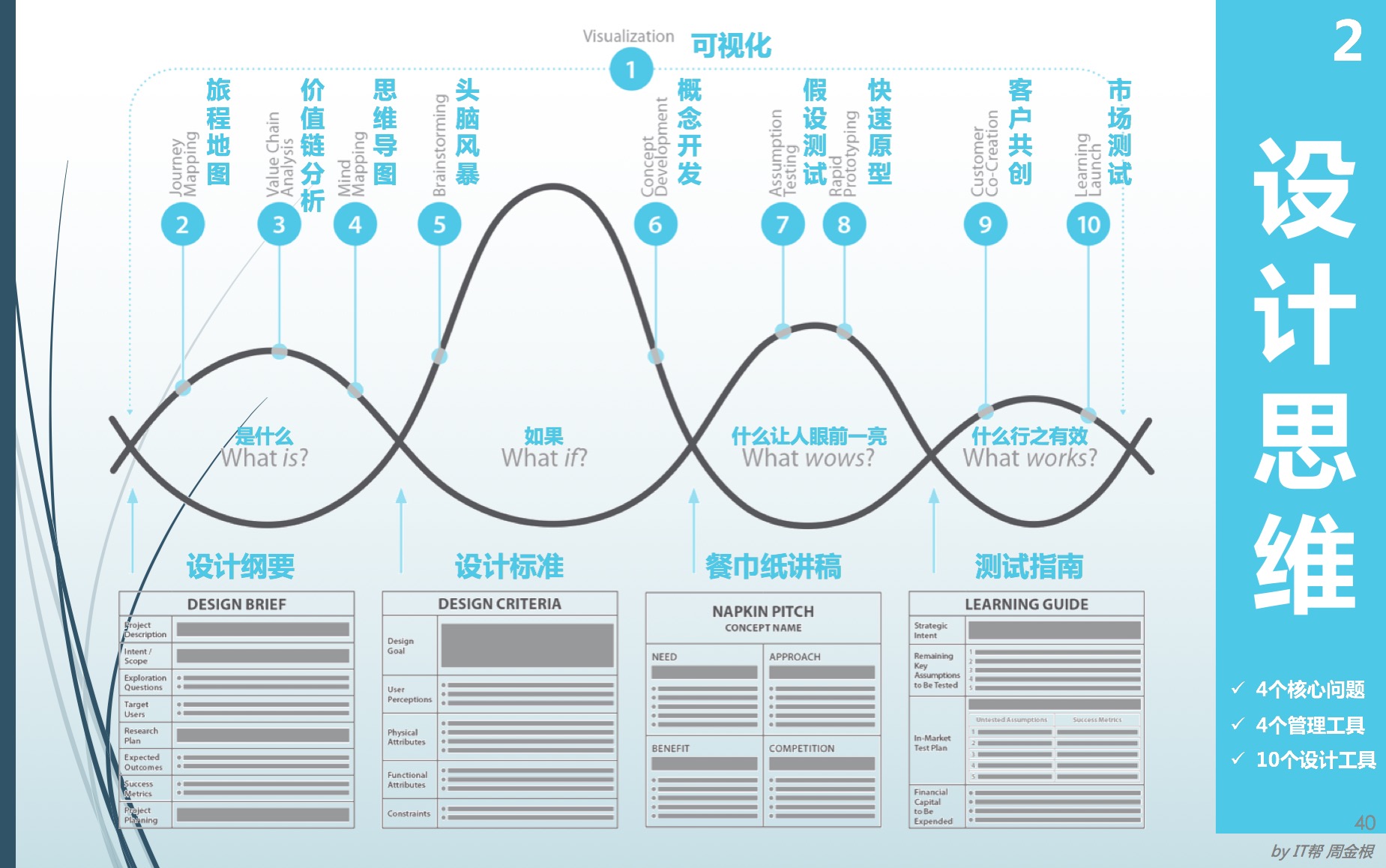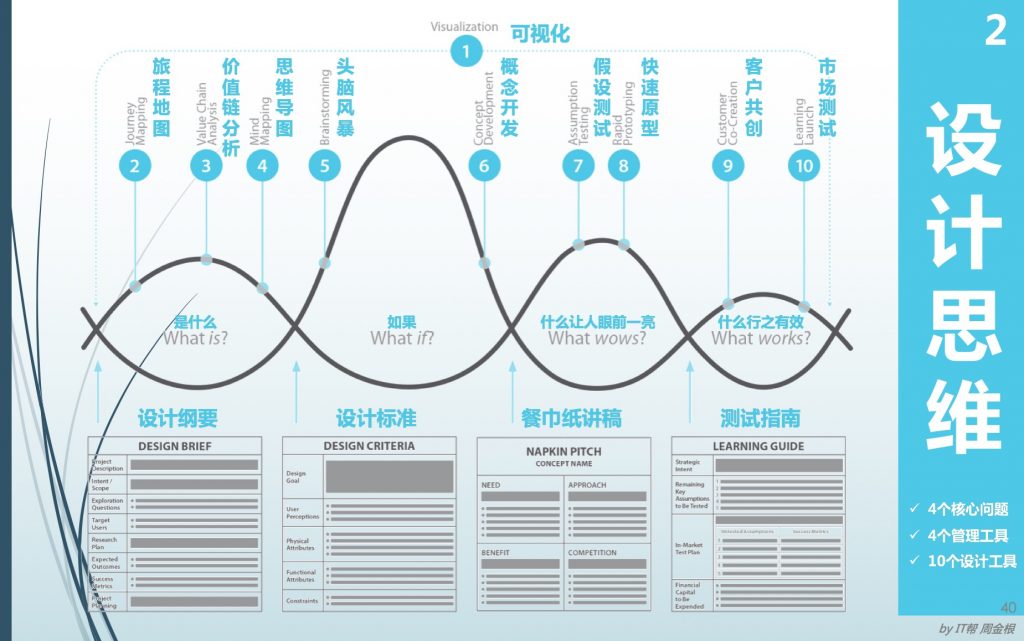This article was motivated by the Harvard Business Review September 2015 Issue that introduced the concept of Design Thinking as a central theme for a series of articles. The articles focused more on the evolution of Design Thinking and presented numerous examples on how organisations have changed to embrace Design Thinking as a central orientation to how they innovate and deliver solutions to the market.

This design thinking process is driven because change and innovation seems to be central to what allot of organisations are experiencing. To meet the challenges associated with this, more intelligent ways of working need to be conceived. As organisations are integrating themselves horizontally, and technology is supporting this and enabling more cross functional collaboration and mobility. This creates a new environment and provides a platform for different ways of working that are more engaging, transparent, faster, and higher performing.
Design thinking is a consequence of this environment and as such has become a popular creative and collaborative discipline.
This article extends design thinking into a process and method that uses a range of common Business Analysis techniques to drive engagement through collaboration. It provides more structure to either side of the creative process to one better frame the domain of concern, and secondly after creativity has produced ideas, to prototype, refine, test and learn. The article also positions this process as a better way to arrive at a business case or pre-project phase, since it provides enormous insights through an engaging discovery process; something that would never occur within a traditional environment into investigation investment feasibility.
Context
This design thinking process provides a structured process that encapsulates creative stages with analytical ones to provide a framework to establish an innovation incubator within the pre-project context within a traditional PMO.
Rather than traditional business planning this kind of process is initiated before projects start providing a sound basis to justify a course of action and capital investment. Businesses can have much higher degree of certainty and less ambiguity when signing off business cases knowing that specific design details have been taken into considering through collaboration, testing, and trial and error.
The alternative is a stage gates waterfall approach that doesn’t maximize stakeholder engagement; collaboration is planned as often serialized tasks that are stretched out over the course of the project, where actual benefits are only understood after implementation and testing when users are engaged. This is after the majority of design decisions have already been made.
DEFINITION
What is design thinking?
This article formalizes design thinking as a process of innovation. The process of innovation starts with defining a problem or needs and concludes with kind of tangible outcome that can be a solution in itself or a basis to iterate. The process makes use of techniques; some of which are divergent for creativity while others are convergent that aim to analyse and refine through rationale.
PRINCIPLES
Design thinking has a number of principles that guide the structure and behavior of individuals working within teams.
- Dependent on information that is either from the individual or the team
- Ideation must be a social collaboration within small teams
- Ideas from individuals must be communicated and shared to become tangible
- No Judgement of ideas within ideation; questions can be raised to produce further ideas
- The aim of ideation is to produce the greatest lateral breath to maximize options
- Generated ideas should either be refined, expanded or eliminated from consideration
- Supports evolution through repetition not perfection through planning
- Ambiguity is more acceptable than certainty
PROCESS AND METHOD
The following process defines how design thinking should be conducted through a set of business analysis techniques.
It is intended that the following process can be conducted quickly and iteratively. Based on the broad range of scenarios it is not possible to give concrete timeframes due to the potential complexity of what is being created and tested. The minimum could be a single sprint cycle for something simple (1-2 Weeks, simple feature testing) to something complex involving a new solution, customers and market feedback. (1-3 months.)
| Phase | Guidelines | Techniques |
| Define Problem/Need | Define a high level description of the problem or business need being explored;Statement should be as broad as a mission/vision statement or as specific as an objectiveThis statement should adequately frame the domain of exploration and therefore define a scope; included and excludedShould provide a starting point for research and information gathering | Context Diagram Domain Mapping Problem/Business Need Mission/Vision Statement Assertion Statement Objective |
| Research & Percolate | Research the domain of exploration;Gather as much information possible relevant to the ‘Define Problem/Need’Individual team members should conduct investigations separately or in number of pairs, or small teams. (Allows for divergent investigations to occur.)Information should be elicited from relevant stakeholders; results should be documented and confirmedParticipants ‘sleep on it’ | Observation Document Analysis Interviews Workshops Surveys Active Listening Rest and Recover |
| Ideate | Come together in a cross-functional team;Generate ideas within a collaborative environment using a range of techniquesEnsure that the team or teams are genuinely cross functional through different viewpoints and stakeholder concernsDifferent individuals with different experiences, knowledge and ways of thinking will by definition produce divergent results Generate ideas;Start by presenting the defined problem/needIterate through group members and elicit ideas;Initial round should be based on outputs from Research & PercolateSubsequent phases should generate new ideas from existing ideasIdeas are purely conceptual, not tangible with anything built or constructedIdeas are documented texts, graphics and video Facilitate energetically, balancing social dynamics;Facilitate the session by orchestrating the team to drive idea generationMediate dominance and amplify passivenessMaintain velocity by “keeping the ball in the air” by;Asking questionsRequesting more informationRequesting ClarificationReturn to scope in idle moments for considerationDo not judge or remove ideas, unless outside of scope | Brain Storming Mind Mapping Graphical Dictation Free Association Fish Bowling Idea Dart Board Tactile Usage of Models/Props Analogies and Metaphors Collaborative Games Charades |
| Prototype | Formalize ideas into prototypes;Prototypes or models should be created to turn a conceptual concept into something tangibleAllows for another level of specification and detail to be discoveredPrototypes should be created to allow for a broad range of options to be considered for possible productionisingEstablish a Comparison Criteria that is generic and can be applied to all prototypes. I.e. Time, cost, complexity, vendor assessments, etc. | Prototyping(People / Process / Technology) |
| Selection | Select the preferred candidate prototypes;Use the previously established Comparison Criteria and rate each prototypeSelect the best prototypes as candidates for testing and experimentationDefine the advantages and disadvantages for each candidate | Tractability Matrix SWOT Analysis Criteria Scoring Analytical Thinking Critical Thinking |
| Test & Experiment | Test preferred candidate prototypes;Define hypothesizes; test cases and predicted outcomesDefine assumptions for the predicted outcomes to be trueDesign and run an experimentDocument and summarize results | Experimentation Surveys NPS KPI Big Data & Analytics |
| Learn | Evaluate test results for lessons learnt and next steps;Consider the test results from all candidates in line with predicationsDetermine actions for each prototypes;Reconfigure and Probe;change existing or define new test cases to extend specification of candidate.Determine candidate OK for formal launchOr Return to Test & Experiment (Evolve Candidate)Back to the Drawing Board;elimination of ideas or additional ideas have been discovered that require additional candidatesReturn to Ideate (Generate New Ideas)Eliminate;remove from future experimentation (Remove)**When candidate reaches an acceptable level of detail and acceptance;Prepare candidate(s) for formal initiationCandidates can be used as a basis forFormal initiativeProjectBusiness Case | Observation Root Cause Analysis Critical Thinking |
CONCLUSION
Usually business planning is conducted with limited tools or insights to adequately assess the feasibility of a strategic initiatives associated with strategic objectives, that is an output of planning at the highest level. Most organisations lack the capability to fast track a discovery phase concerning projects and instead adopt a linear approach to progress mainly due to project overhead and SDLC. Once an C-Suite or operations employee has an idea, the organisation needs a way to fast track the discovery and design process to understand what works and what does not, within a light weight, fast and effective process.
Because this approach is pre-project, budgets that funds this would be from operational expenditure and therefore could be accommodated more as a constant, rather than a temporary endeavour like a project. Who wants to only innovate some of the time?
An organisation could establish an ICOE (Innovation Centre of Excellence) as a core capability of enterprise and build an engagement model allowing services and capabilities to be established across business units, allowing for many potential innovation engines to be established in areas of rapid change and growth. Organisations would gain the benefits of multiple constant innovation pipelines. This horizontal nature of innovation also has significant cultural influence since it is no longer project based, but operational, rather it is part of the organisations DNA and values and behaviours.

Design thinking within a structured methodical framework can form the engine of an organisation and a focal point of innovation. It lowers risk, reduces costs, improves performance and changes organisational culture for a more collaborative and effective way of getting things done.
转:Design Thinking for Business Analysts
https://www.modernanalyst.com/Resources/Articles/tabid/115/ID/3361/categoryId/32/Design-Thinking-for-Business-Analysts.aspx
